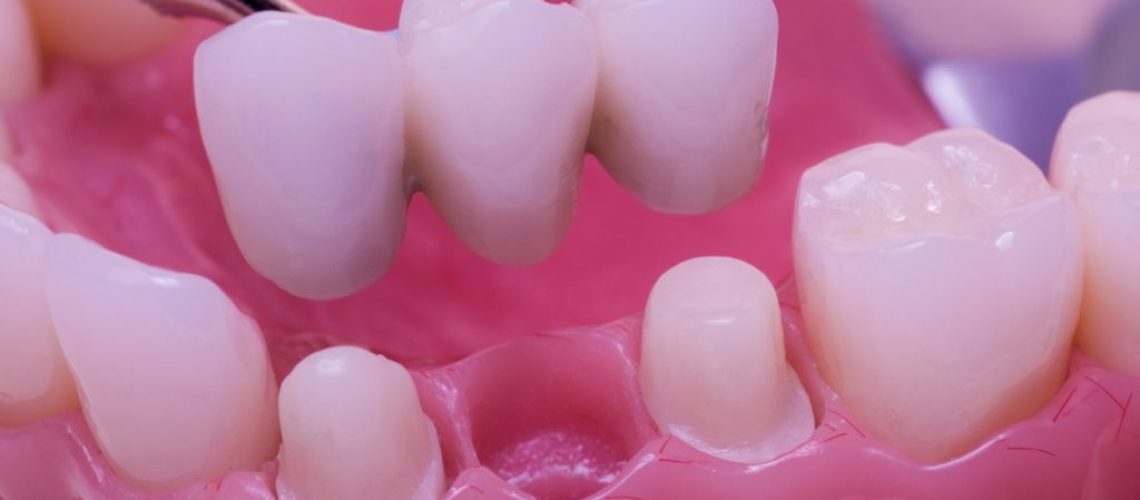If you’re missing one or more teeth, you might have heard about dental bridges as a solution to restore your smile. Dental bridges are a common and effective way to replace missing teeth, providing both functional and aesthetic benefits. In this blog, we’ll explore what dental bridges are, the different types available, and how they can help you regain a complete, confident smile.
What is a Dental Bridge?
A dental bridge is a prosthetic device used to fill the gap created by one or more missing teeth. As the name suggests, a bridge literally bridges the gap between your teeth by anchoring artificial teeth, known as pontics, to the natural teeth or dental implants on either side of the gap. These anchor teeth are called abutments.
The pontics can be made from a variety of materials, including porcelain, gold, alloys, or a combination. Porcelain is often preferred because it can be color-matched to the surrounding natural teeth, making the bridge blend seamlessly with your smile.
Why Would You Need a Dental Bridge?
Missing teeth can cause a range of issues, from difficulty chewing and speaking to changes in your bite and facial shape. A dental bridge can help address these problems by:
- Restoring Your Smile: A dental bridge fills the gap left by missing teeth, giving you a full, natural-looking smile.
- Improving Function: Missing teeth can make it difficult to chew food properly or speak clearly. A dental bridge restores the function of your teeth, allowing you to eat and talk with ease.
- Maintaining Face Shape: Teeth play a crucial role in supporting the structure of your face. When teeth are missing, it can cause the face to sag or look sunken. A dental bridge helps maintain your natural face shape.
- Preventing Teeth Shifting: When a tooth is missing, the adjacent teeth may begin to shift into the empty space, leading to misalignment and bite problems. A bridge helps keep your remaining teeth in their proper positions.
Types of Dental Bridges
There are several types of dental bridges, each designed to meet different needs:
- Traditional Dental Bridge: This is the most common type of bridge, consisting of one or more pontics anchored by crowns on the abutment teeth. Traditional bridges are typically used when there are natural teeth on both sides of the gap.
- Cantilever Dental Bridge: A cantilever bridge is used when there is only one adjacent tooth to anchor the bridge. While less common, it can be an option when there’s only one natural tooth next to the gap.
- Maryland Bonded Bridge: Also known as a resin-bonded bridge, this type uses a metal or porcelain framework bonded to the back of the adjacent teeth. It’s less invasive than a traditional bridge because it doesn’t require crowns on the abutment teeth.
- Implant-Supported Bridge: In cases where several teeth are missing, an implant-supported bridge may be used. Instead of being anchored to natural teeth, this bridge is supported by dental implants, making it a more secure and durable option.
What is the Process for Getting a Dental Bridge?
Getting a dental bridge typically involves multiple visits to the dentist. Here’s what you can expect:
- Initial Consultation: Your dentist will examine your mouth, take X-rays, and discuss your treatment options to determine if a dental bridge is right for you.
- Preparation: If you’re getting a traditional or cantilever bridge, the abutment teeth will need to be prepared by removing a small amount of enamel to make room for the crowns. For an implant-supported bridge, dental implants will be surgically placed.
- Impressions: Your dentist will take impressions of your teeth, which will be used to create a custom bridge that fits perfectly in your mouth.
- Temporary Bridge: While your permanent bridge is being made, you may receive a temporary bridge to protect the exposed teeth and gums.
- Fitting the Permanent Bridge: Once your permanent bridge is ready, your dentist will check the fit and make any necessary adjustments before cementing it in place.
Caring for Your Dental Bridge
With proper care, a dental bridge can last many years. It’s important to maintain good oral hygiene by brushing and flossing daily, especially around the bridge, to prevent decay and gum disease. Regular dental check-ups will also help ensure your bridge remains in good condition.
Conclusion
A dental bridge is an excellent solution for replacing missing teeth, restoring both function and appearance. Whether you’re dealing with a single missing tooth or multiple gaps, a bridge can help you regain a confident, healthy smile. If you think a dental bridge might be right for you, consult with your dentist to discuss the best options for your specific needs.
